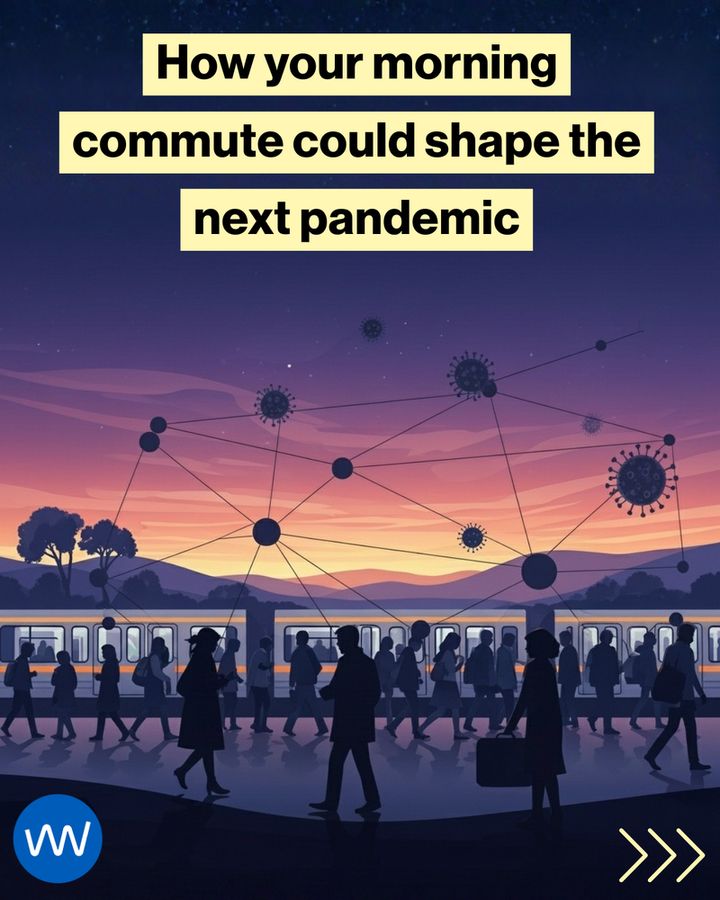
PI: Leo Swadling
@IIT_UCL 🍐
www.researchgate.net/profile/Leo-Swadling
profiles.ucl.ac.uk/61477-leo-swadling
www.medrxiv.org/content/10.1...


www.medrxiv.org/content/10.1...
www.biorxiv.org/content/10.1...

www.biorxiv.org/content/10.1...
Swipe to learn more. 👉

Swipe to learn more. 👉
Epigenetic regulation of T cell exhaustion in cancer
www.nature.com/articles/s41...

Epigenetic regulation of T cell exhaustion in cancer
www.nature.com/articles/s41...
www.nature.com/articles/s41...
#vaccineswork #tcells #immunology

www.nature.com/articles/s41...
#vaccineswork #tcells #immunology
Join Dr. Laura Pallett for "The Dual Demands of Academic Travel and Caregiving"
🗓️ Sept 25 | 🕒15:00 CEST
🔗https://tinyurl.com/yefis2025-ia2
Hosted by the Improving Academia group of yEFIS

Join Dr. Laura Pallett for "The Dual Demands of Academic Travel and Caregiving"
🗓️ Sept 25 | 🕒15:00 CEST
🔗https://tinyurl.com/yefis2025-ia2
Hosted by the Improving Academia group of yEFIS
pmc.ncbi.nlm.nih.gov/articles/PMC...
#immunology #vaccine #Tcell #memory

pmc.ncbi.nlm.nih.gov/articles/PMC...
#immunology #vaccine #Tcell #memory
publications.ersnet.org/content/erjo...
#clinicaltrial #tcell #vaccineswork #immunology #vaccine
publications.ersnet.org/content/erjo...
#clinicaltrial #tcell #vaccineswork #immunology #vaccine
🧪🧬at the "would you get sick for science" stand 🧪🧬
talking about human challenge, vaccines and immunology!
www.greatexhibitionroadfestival.co.uk
www.imperial.ac.uk/institute-of...
immprove.ac.uk

🧪🧬at the "would you get sick for science" stand 🧪🧬
talking about human challenge, vaccines and immunology!
www.greatexhibitionroadfestival.co.uk
www.imperial.ac.uk/institute-of...
immprove.ac.uk
#UCL #IFReC #vaccine


My final thought for the day, is that from mechanistic insights or enhancing and developing medicines, it’s exciting to see quantitative research taking increasing space in immunology. Let’s keep the momentum going!
Postdoc Peter, signing off.
#qimmunoday
My final thought for the day, is that from mechanistic insights or enhancing and developing medicines, it’s exciting to see quantitative research taking increasing space in immunology. Let’s keep the momentum going!
Postdoc Peter, signing off.
#qimmunoday
Another successful #qimmuno day has drawn to a close, but discussions continue in the pub around the corner! Congrats to the organising committee @qimmuno.bsky.social for an excellent day and to all the speakers for engaging talks.
Another successful #qimmuno day has drawn to a close, but discussions continue in the pub around the corner! Congrats to the organising committee @qimmuno.bsky.social for an excellent day and to all the speakers for engaging talks.
Xiaowen Chen was the final presenter, and presented novel research into how we can infer resource competition from dynamic abundance data. A very interesting topic, which has some cool potential overlaps with T and B cell competition for antigens and/or cytokines.
Now for posters!
Xiaowen Chen was the final presenter, and presented novel research into how we can infer resource competition from dynamic abundance data. A very interesting topic, which has some cool potential overlaps with T and B cell competition for antigens and/or cytokines.
Now for posters!
Pebs Edwards presented some interesting data on the TCR repertoire in patients with lynch syndrome. A personal highlight for me was the 2 year persistence of neo-antigen clonotypes with apparent subsequent reactivation in at least one patient.
Pebs Edwards presented some interesting data on the TCR repertoire in patients with lynch syndrome. A personal highlight for me was the 2 year persistence of neo-antigen clonotypes with apparent subsequent reactivation in at least one patient.
Final set of talks now. Aubin Ramon started by describing his work to develop NanoMelt for nanobody thermostability assessment. The model uses ensemble learning on just 640 sequences, but accurately predicted Tm in a selection of nanobodies with at least 30% distance from the training set.
Final set of talks now. Aubin Ramon started by describing his work to develop NanoMelt for nanobody thermostability assessment. The model uses ensemble learning on just 640 sequences, but accurately predicted Tm in a selection of nanobodies with at least 30% distance from the training set.
Alastar Phelan then spoke about his mathematical modelling approach to enhance signal detection in dual pulse nucleoside labelling experiments for improving cell cycle analysis.
Both speakers showcased their work really well, armed with only a pen and whiteboard!
#qimmunoday
Alastar Phelan then spoke about his mathematical modelling approach to enhance signal detection in dual pulse nucleoside labelling experiments for improving cell cycle analysis.
Both speakers showcased their work really well, armed with only a pen and whiteboard!
#qimmunoday
A nice, unique feature of these days is the whiteboard talks.
Michael Schneider went first and gave a nice explanation of how he is augmenting structure enhanced language models by improving MLM with intelligent token masking and space filling curves.
A nice, unique feature of these days is the whiteboard talks.
Michael Schneider went first and gave a nice explanation of how he is augmenting structure enhanced language models by improving MLM with intelligent token masking and space filling curves.
Alexis Farman discussed his mathematical models for CAR T cell migration conditions in a microfluidics device, focussing on chemoattractant availability. An interesting tidbit to finish on, where optimisation of receptor affinity was discussed, overlapping nicely with Pietro’s talk.
Alexis Farman discussed his mathematical models for CAR T cell migration conditions in a microfluidics device, focussing on chemoattractant availability. An interesting tidbit to finish on, where optimisation of receptor affinity was discussed, overlapping nicely with Pietro’s talk.


